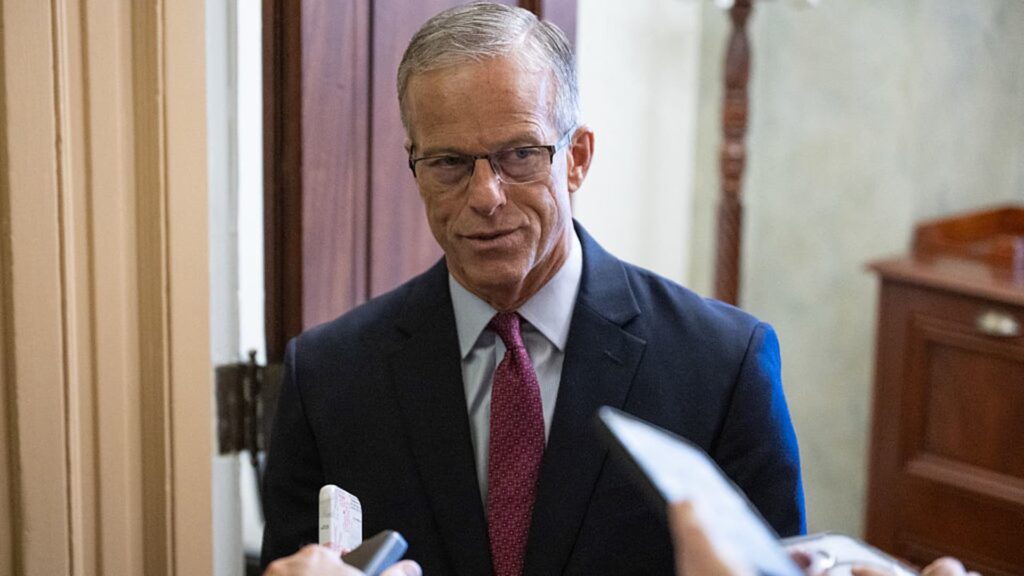On October 2, 2025, the U.S. Senate experienced a significant stalemate as it failed for the fifth time to pass a House bill aimed at temporarily funding the government. The ongoing government shutdown has now extended into its sixth day, underscoring the deep divisions between Republicans and Democrats over fiscal matters. As tensions rise and potential layoffs loom, both parties are under pressure to resolve the impasse swiftly.
| Article Subheadings |
|---|
| 1) Stalemate in the Senate |
| 2) Responses from Both Sides |
| 3) The Threat of Layoffs |
| 4) Next Steps for the Senate |
| 5) Implications for Federal Workers |
Stalemate in the Senate
On October 2, 2025, the Senate’s attempt to pass a crucial funding bill faced another setback, marking the fifth failed vote. The 52-42 tally mostly fell along party lines, reflecting the entrenched division in Congress. With both chambers controlled by Republicans, the inability to reach an agreement illustrates the complexities of U.S. governance, especially when partisan interests clash. This recurring failure to pass a funding measure has exacerbated the tensions within the Capitol as the shutdown continues.
The purpose of the House bill was to fund the government through November 21, yet the persistent opposition from Democratic members highlights a fundamental disagreement over budgetary allocations and spending priorities. Previous votes had shown similar outcomes, indicating a pattern of unyielding partisanship. Even while the Senate rejected proposals from House Democrats to temporarily fund the government, the overarching feeling of urgency surrounding the shutdown was palpable. With government resources stretched thin, many constituents await the resolution of this crisis.
Responses from Both Sides
In reaction to the failed vote, leaders from both sides of the aisle voiced their concerns and frustrations. Democratic legislators condemned the lack of bipartisan cooperation, asserting that it impedes effective governance and places undue hardship on federal employees and services. On the other side, Republican leaders expressed confidence in their proposed solutions but lamented the need for Democratic support to advance any legislative measures. Communication remains strained as both parties dig in their heels, suggesting that a resolution may not come easily.
The Senate’s dynamic has become increasingly indicative of the broader national political landscape, where cooperation is often overshadowed by conflict. The stakes are higher than just passing a funding bill; they encapsulate critical issues surrounding healthcare, education, and governmental services that millions of Americans rely upon. The implications of this deadlock could have far-reaching consequences, not just for lawmakers but for citizens who feel the impacts of political inaction.
The Threat of Layoffs
As the government shutdown persists, officials have started to issue warnings regarding prospective layoffs among federal employees. The National Economic Council’s Director, Kevin Hassett, indicated in a televised interview that President Donald Trump could take drastic actions if the Senate does not approve the funding bill soon. “If we reach a point of serious crisis, we might have to take sharp measures,” he stated, underscoring the mounting pressure to resolve the situation promptly.
While it’s typical for government agencies to furlough workers during shutdowns, the notion of layoffs introduces an alarming dimension to the ongoing crisis. The emotional toll on federal employees, who are left in uncertainty about their job status, is compounded by the fact that many have families that depend on their income. Such measures could escalate public dissatisfaction, further complicating the political equation for lawmakers who must balance fiscal responsibility with the welfare of constituents.
Next Steps for the Senate
As reported, Senate Majority Leader John Thune has the ability to call for another vote as soon as Tuesday, but the outcome remains uncertain given the entrenched opposition from the Democratic caucus. According to Senate rules, a 60-vote threshold is required to advance any significant legislation, meaning that the Republican leadership will need to secure bipartisan support to overcome the stalemate. Historically, navigating such challenges has required skillful negotiation and compromise.
Many political analysts believe that time is running out for Congress to act. With the shutdown now dragging into its sixth day, the urgency for resolution grows. Lawmakers are under immense pressure from their constituents to find common ground and avoid escalation into a full-blown crisis that could have dire consequences for not just government workers, but for families who depend on government services.
Implications for Federal Workers
The ongoing government shutdown leads to a palpable impact on federal workers who find themselves facing disruptions in their livelihoods. While furloughs are commonplace during shutdowns, the threat of layoffs casts a shadow over the entire workforce. Many employees are left to contemplate their futures, uncertain whether they will be returning to work or facing a possible job loss.
Moreover, the morale among federal workers is deteriorating as uncertainty reigns. The psychological stress of waiting for a resolution, coupled with financial pressures from potential loss of income, paints a grim picture for many families. As the government grapples with funding crises and operational shutdowns, the human element of these decisions cannot be overlooked; the impact is felt not just in the halls of Congress but within the homes of millions of federal employees.
